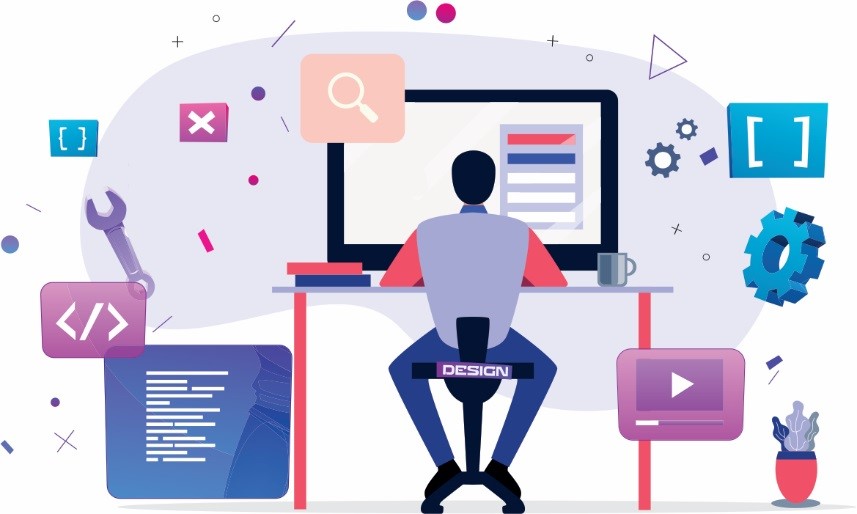Discover the Advantages of Nearshore Software Development for Your Team
Discover the Advantages of Nearshore Software Development for Your Team
Blog Article
Devoted Developers vs. In-House Teams: Which Is Right for You?
The choice between using specialized designers and maintaining an in-house group is a significant one that can affect the trajectory of your jobs and total organization strategy. Devoted developers supply a level of flexibility and specialized experience that can be useful for certain, short-term campaigns. On the other hand, internal groups add to a cohesive business society and a nuanced understanding of lasting objectives. By taking a look at crucial elements such as spending plan, project scope, and desired control, you can much better establish which strategy lines up with your organizational needs. The effects of this selection expand beyond instant end results-- think about the broader influence on your company landscape.
Recognizing Committed Designers
The expanding demand for specialized abilities in the technology sector has actually led to the development of devoted developers as a feasible solution for numerous companies. These professionals are typically gotten on a job basis, permitting companies to leverage details proficiency without the lasting dedication connected with full-time hires. Devoted designers are frequently ingrained within a customer's group, giving adaptability and scalability to fulfill task requirements.
This model permits organizations to access an international ability swimming pool, which is especially advantageous in a quickly evolving technical landscape. Committed developers can be sourced from various geographical places, making sure that business can locate the ideal capability at affordable prices. They typically bring a wide range of experience and knowledge, having worked on diverse projects throughout various sectors.
Additionally, dedicated programmers can concentrate exclusively on the tasks available, improving productivity and effectiveness. They are geared up to integrate effortlessly right into existing workflows, teaming up very closely with internal groups to achieve job purposes. This strategy not only minimizes the burden of recruitment and training but additionally allows companies to remain active, adapting promptly to transforming market needs and technological innovations.
Advantages of In-House Teams

In addition, in-house teams tend to have a deeper understanding of the firm's goal, worths, and goals. This placement can enhance staff member interaction and motivation, as staff member really feel extra attached to their job and the organization's success. In addition, having a devoted in-house group permits far better positioning of purposes and techniques, as these participants are continually concentrated on the company's top priorities.
Internal groups additionally promote quicker decision-making processes, as they can respond more swiftly to difficulties and adjustments. The well established connections and familiarity with firm protocols permit structured workflows and reduced miscommunication. Inevitably, the combination of a natural culture, alignment with business goals, and efficient interaction makes in-house groups a useful asset for lots of organizations, especially those looking to cultivate lasting development and technology.
Cost Considerations
When evaluating expense factors to consider, both dedicated developers and internal groups present distinct economic ramifications for companies. Involving dedicated developers usually includes a pay-per-project or per hour rate design, which can be economical for organizations with fluctuating project needs. This approach enables flexibility in scaling resources up or down, guaranteeing that firms just pay for the services they require.
In comparison, in-house teams involve taken care of costs, consisting of salaries, benefits, and overhead expenditures such as office and tools. While this version provides better control and instant schedule of resources, it may result in higher long-term costs, specifically if the work does not justify a full-time team.
Furthermore, firms ought to consider the hidden expenses linked with employment and training of in-house staff members, which can additionally stress budgets. In many cases, the moment and resources invested in taking care of an internal team can interfere with the organization's core company goals.

Task Administration and Flexibility
Task monitoring and adaptability are critical variables that affect the option between dedicated programmers and in-house teams. Dedicated groups commonly have actually developed processes for taking care of tasks properly, leveraging certain approaches like Agile or Scrum, which assist in repetitive development and versatility.

Eventually, the choice in between in-house teams and committed developers pivots on the preferred degree of versatility and the specific job administration demands. Business should assess their functional characteristics, task complexity, and resource availability to identify which option lines up ideal with their calculated goals.
Making the Right Choice
Picking the right development approach-- specialized programmers or internal teams-- requires a mindful analysis of different variables that align with a firm's strategic goals. On the other hand, in-house groups can supply better continuity and combination with existing personnel.
Following, assess your budget plan. Dedicated designers commonly offer an economical service for temporary tasks, while in-house teams may incur higher top mobile app developers long-term costs due to incomes, benefits, and overhead expenses. Evaluate the degree of control and collaboration desired; in-house teams typically promote more powerful communication and positioning with company culture.
In addition, consider the time frame. If prompt results are essential, specialized developers can be onboarded rapidly, whereas developing an internal team requires time for recruitment and training. Weigh the long-lasting vision of your company. If constant development is important, spending in an in-house group might produce far better returns with time. Eventually, the choice rests on a comprehensive analysis of these factors, making sure positioning with your business's general goals and operational requirements.
Final Thought
Finally, the choice in between in-house teams and devoted programmers hinges on job requirements and organizational objectives. Committed designers offer adaptability and specialized knowledge, making them appropriate for temporary campaigns. On the other hand, in-house teams cultivate a cohesive society and deeper positioning with long-lasting goals. Careful assessment of budget plan restrictions, project timelines, and desired control degrees is necessary for identifying one of the most proper approach, ensuring alignment with critical priorities and functional efficiency.
The choice in between making use of specialized programmers and maintaining an in-house group is a substantial site link one that can influence the trajectory of your projects and general organization approach.Task management and flexibility are critical aspects that affect the option in between official source dedicated programmers and internal groups. nearshore software development.In contrast, in-house groups might succeed in keeping a regular task administration framework due to their experience with the organization's culture and lasting goals. Committed designers frequently offer a cost-efficient remedy for short-term projects, while in-house teams might sustain greater lasting expenses due to salaries, benefits, and expenses prices.In final thought, the decision in between committed developers and internal groups pivots on job demands and organizational goals
Report this page